Latest Posts
Don’t Be a Hooker- Understanding your Client’s Decision Process
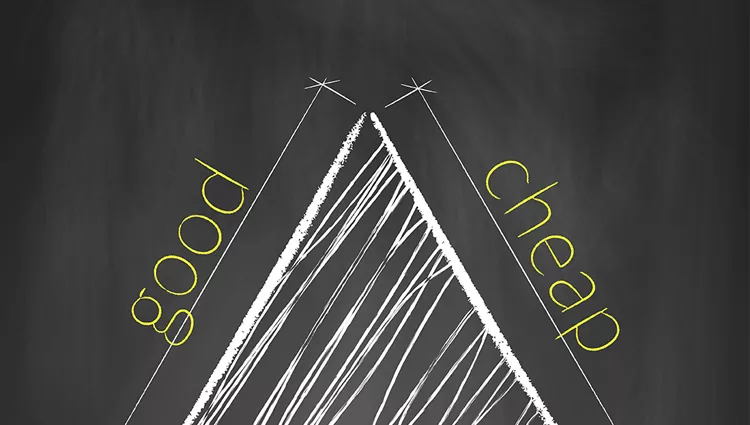
Have you heard of the Iron Triangle? That’s okay. Most people haven’t. But you exercise its values every single day that you take part of someone else’s business.
When you go grab that hamburger at lunch time.
When you choose Amazon Prime over some other store that doesn’t offer included 2 day shipping.
When you buy your next pair of jeans at Target or Macy’s.
You set the Iron Triangle in motion with every purchase decision you make.
Now, this is not to be confused with the political version of the Iron Triangle. I’m pretty sure anything involving Congress would include at least three dozen more indirect points and paths. So we won’t go there. This Iron triangle is also called the Product triangle, the Project Management triangle —there are variations of this that keep to the basic principles.
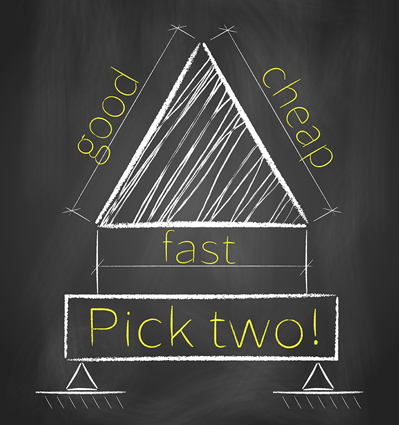
How does it work?
The concept is that for any product, you can have two of the three — but never all three. The basics are simple: In order to have a product that is good and cheap, it’s probably going to take longer to receive it. (For instance: Free Shipping is of the Good/Cheap option. You get it free, and it’s a great service, but it usually means shipping ground. You aren’t going to get your item fast. On the flip side, if you want your item fast (and you’ve already bought it because it’s good), you’ll pay more for shipping.
(Now before anyone says Amazon Prime Shipping… Their model of 2-day shipping had a goal of customer acquisition into their Prime Memberships. In that way, the offering is more of a marketing ploy and benefit than a service meant to provide income. It doesn’t pay for itself. It’s estimated that Amazon loses $ 1 billion a year in Prime-related shipping costs. So not exactly the model you want to employ. But they are in an extremely competitive market, so they did what they needed to beat the Good, Fast, Cheap triangle.)
So how exactly does this “Good, Fast, Cheap” triangle work? To understand your brand position, you need to know how your customers and clients use this to choose your product — or your competitors.
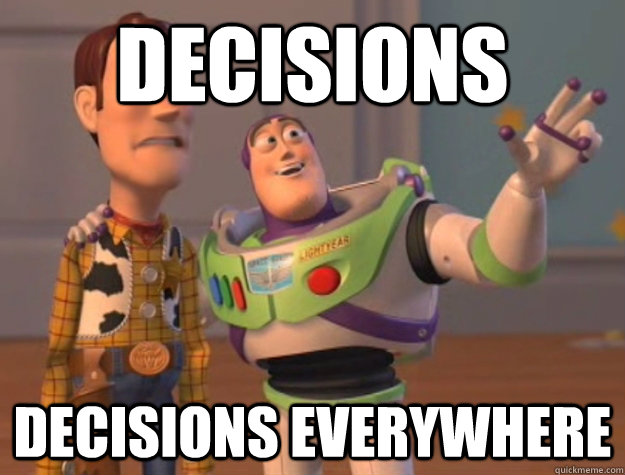
A Tale of Iron Triangle Woe
I worked for an event center that had a restaurant/bar, a gym and a robust team building event business. The gym was successful. The events business was successful. But the restaurant floundered. No matter what changes they made, it floundered. When I joined, we started new marketing campaigns, we updated the menu and the look and feel of everything in the restaurant brand. We sent out coupons. We advertised. This building was smack dab in the middle of an industrial business park, which meant potential customers galore. A market that had largely been ignored.
All of our new strategies worked. We brought those people in. For a time, we saw a significant jump in our lunch hour business.
But it started to dwindle. That flow of traffic slowly began to die away. All the things we had done to bring first time customers (or repeat customers who hadn’t been there in a long time) into the restaurant worked. But we didn’t keep them coming back.
“Why?” you might ask? There are obvious answers. The food/experience wasn’t great. It wasn’t fast. The cost was too high.
Hmm… Quality. Speed. Cost. Look familiar?
All the reasons why this restaurant could never seem to get itself off the ground are found hidden in that triangle. See the restaurant wasn’t hitting any of the points of the triangle, much less two of them.
When you look at this triangle, you have to mentally change the phrasing to each item. “Is your quality better than your competitors?” “Are you faster than your competitors?” Will customers spend less at your business for the same thing than if they went somewhere else?”
For this restaurant, the answer to all three? No.
When you realize that, it’s not shocking that they couldn’t maintain business. People select their options based on what matters most to them in the moment – good, fast or cheap, and that decision will be based on their experiences or strong word of mouth.
Let’s Go Out to Lunch…
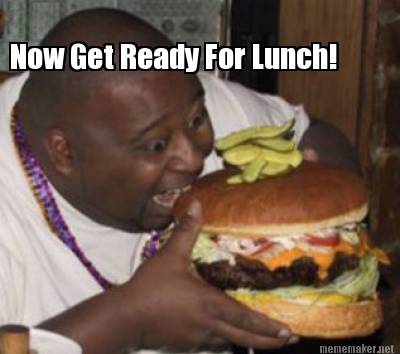
To put this into practice, let’s say it’s your lunch break from work and you want to go out and get something. You have an hour. That makes your first criteria selection fairly obvious. It must be reliably FAST.
Now, your next set of criteria. Is there something delicious a certain restaurant offers you’ve been been craving? If so, you’ve selected “GOOD.”
Or perhaps it’s the day before payday and the dollars in the wallet are looking thin? Then “CHEAP” tops the list.
Within a short span of consideration, you’ve evaluated your options in the moment of purchase based on three factors: Good, Fast, and Cheap. You’ve self-selected your criteria and once you know that, you begin to look at the options that fit into what matters most to you right then and right there.
Put this decision process into anywhere you spend money. Let’s say you need to buy a new pair of jeans. How long do you have to shop? Do you want/need something specific? Are you looking to get something at a cheaper price? Consider your buying decisions and what goes through your mind before you make them. Sometimes, those decisions take you to Macy’s. Sometimes, they take you to Walmart. But you always self-select your options.
How Do You Help Them Self-Select?
The restaurant in our Tale of Woe dwindled on return business because the food was more expensive than most restaurants in the area, the service was not fast enough for a lunch hour rush, and there was nothing special about the experience or food offered. So when nearby customers made their purchase decision, it didn’t rate highly on any point compared to the many, many options of restaurants nearby. Unless it made significant changes to the product and the service, this restaurant was never going to win the lunch contest.
Now…had that restaurant been the only restaurant in thirty miles? Suddenly, it’s a much faster option than the any other alternative. And the price becomes up for grabs, as well, given the cost of gas and other factors. All of your product features will weigh against the alternatives.
In your business, it pays to understand your competitors and where they fit into the triangle, because it helps you understand how to position yours. What are their selling points? What benefits do they offer? How do they help clients self-select their choices when the time comes?
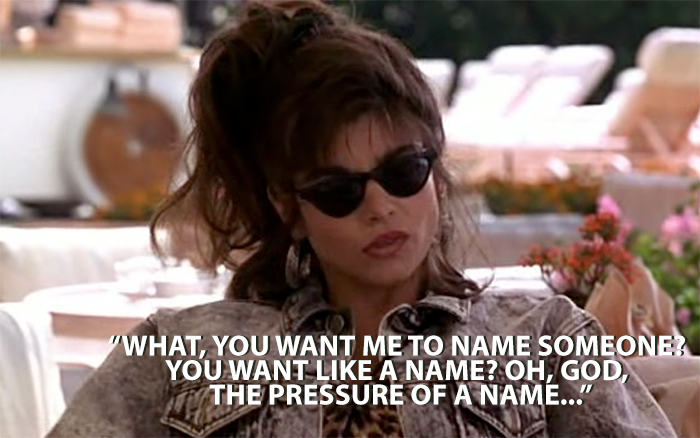
Be Top of Mind When They Are Ready
Up until a client is at that point of decision, everything they’ve heard, read, seen, watched or ignored will be rattling around in their head. Most often, we’re bombarded by messages that we don’t even realize we’re taking in. But the time will come when your customer have need of the product or service that you are offering. It’s that moment, when the brain goes back through the mental filing cabinet and recalls all those things it heard, read, saw, watched. What stands out? The marketing messages you’ve put out, the benefits you’ve promised will all come back into play when they are ready to self-select their options based on what matters to them.
Where do you fit? How will you stack up against the alternatives? What do you want your clients to select you for? If you don’t know the answer to those questions, then you may need to find another street corner.

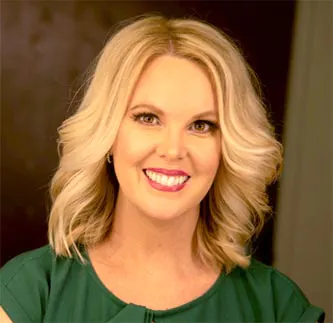
Hi, I'm Misty Megia!
I’m a Creative Director for high-achieving leaders who want to unmute themselves to give presentations that move people profoundly through my Corporate Speaking Program and my Theatre of Public Speaking Program.
Discover the
10 mistakes
even seasoned presenters make!
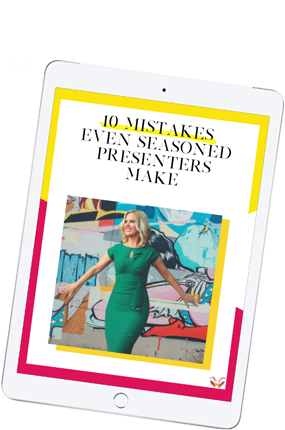
Work
With Me
Corporate Speaking Program
Your team’s success depends on their ability to speak with clarity. Give them the tools to meet the moment with professionalism.
Theatre of Public Speaking Program
Take my 6-week on-demand course with live group coaching to deliver big messages that motivate and inspire.



